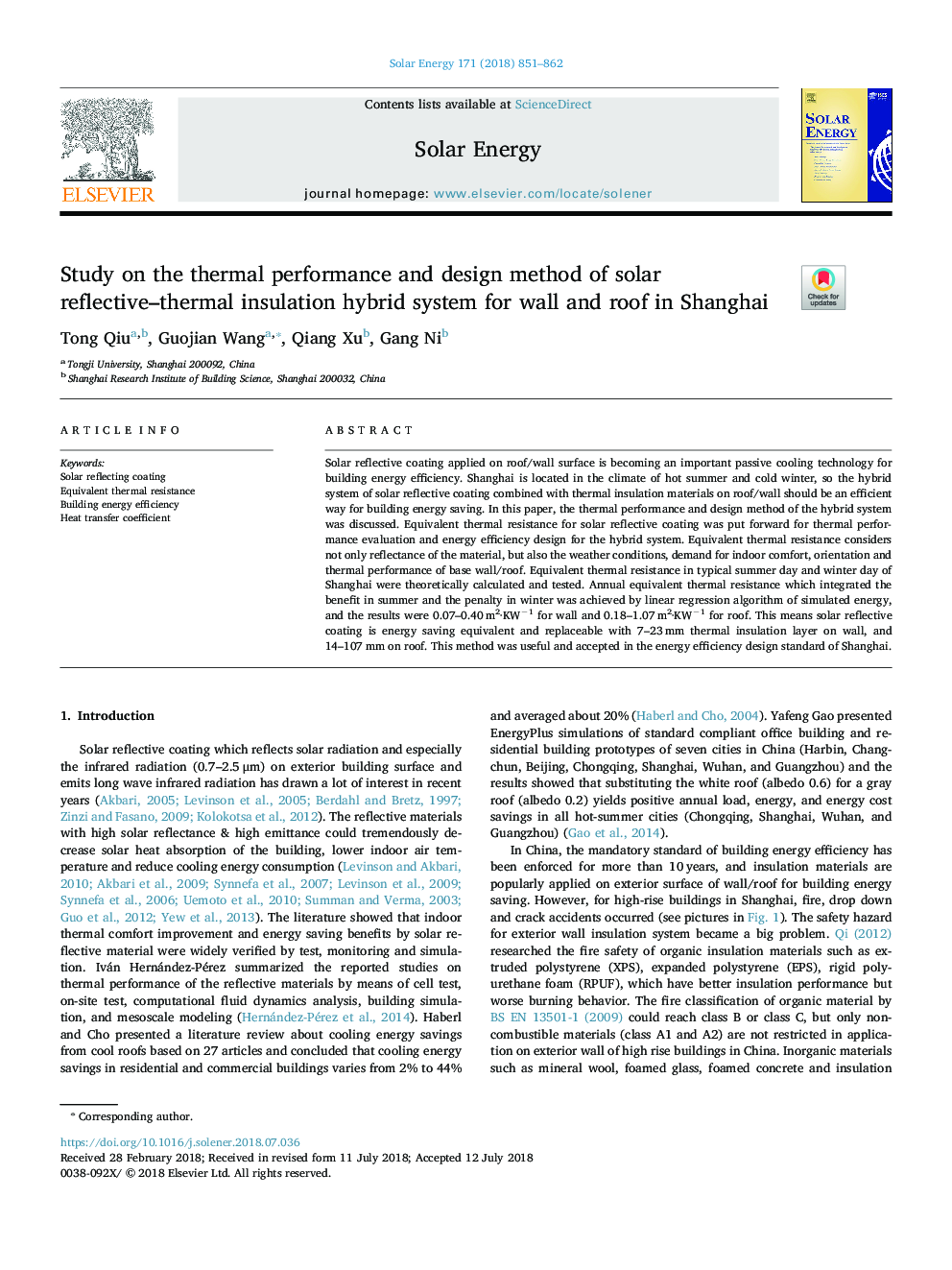| Article ID | Journal | Published Year | Pages | File Type |
|---|---|---|---|---|
| 7935092 | Solar Energy | 2018 | 12 Pages |
Abstract
Solar reflective coating applied on roof/wall surface is becoming an important passive cooling technology for building energy efficiency. Shanghai is located in the climate of hot summer and cold winter, so the hybrid system of solar reflective coating combined with thermal insulation materials on roof/wall should be an efficient way for building energy saving. In this paper, the thermal performance and design method of the hybrid system was discussed. Equivalent thermal resistance for solar reflective coating was put forward for thermal performance evaluation and energy efficiency design for the hybrid system. Equivalent thermal resistance considers not only reflectance of the material, but also the weather conditions, demand for indoor comfort, orientation and thermal performance of base wall/roof. Equivalent thermal resistance in typical summer day and winter day of Shanghai were theoretically calculated and tested. Annual equivalent thermal resistance which integrated the benefit in summer and the penalty in winter was achieved by linear regression algorithm of simulated energy, and the results were 0.07-0.40â¯m2·KWâ1 for wall and 0.18-1.07â¯m2·KWâ1 for roof. This means solar reflective coating is energy saving equivalent and replaceable with 7-23â¯mm thermal insulation layer on wall, and 14-107â¯mm on roof. This method was useful and accepted in the energy efficiency design standard of Shanghai.
Related Topics
Physical Sciences and Engineering
Energy
Renewable Energy, Sustainability and the Environment
Authors
Tong Qiu, Guojian Wang, Qiang Xu, Gang Ni,
